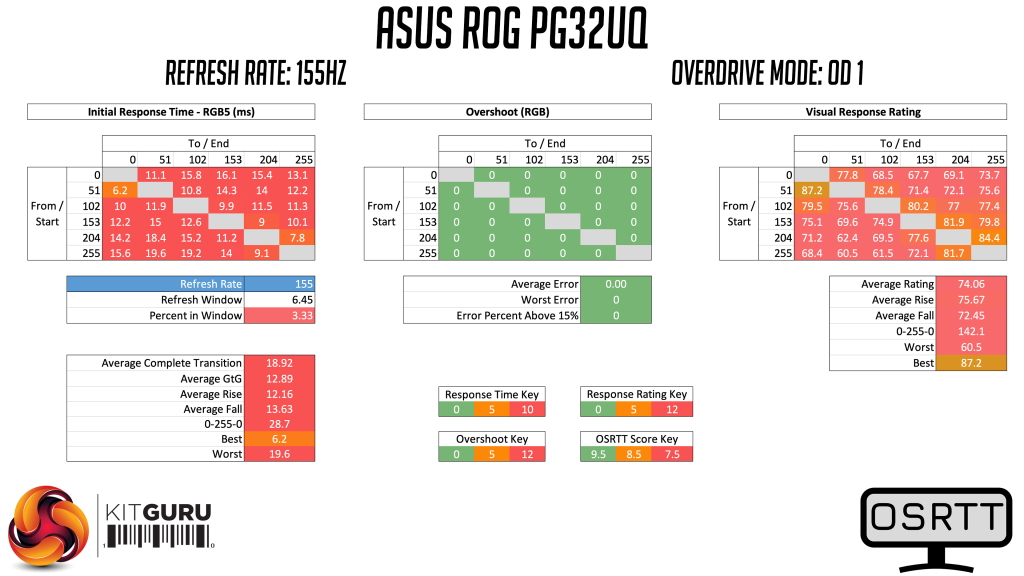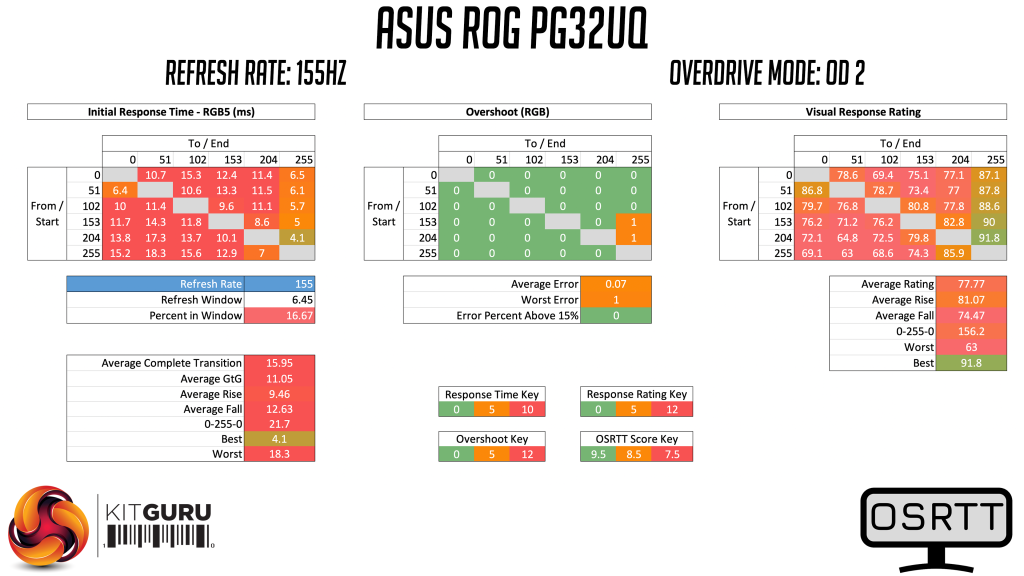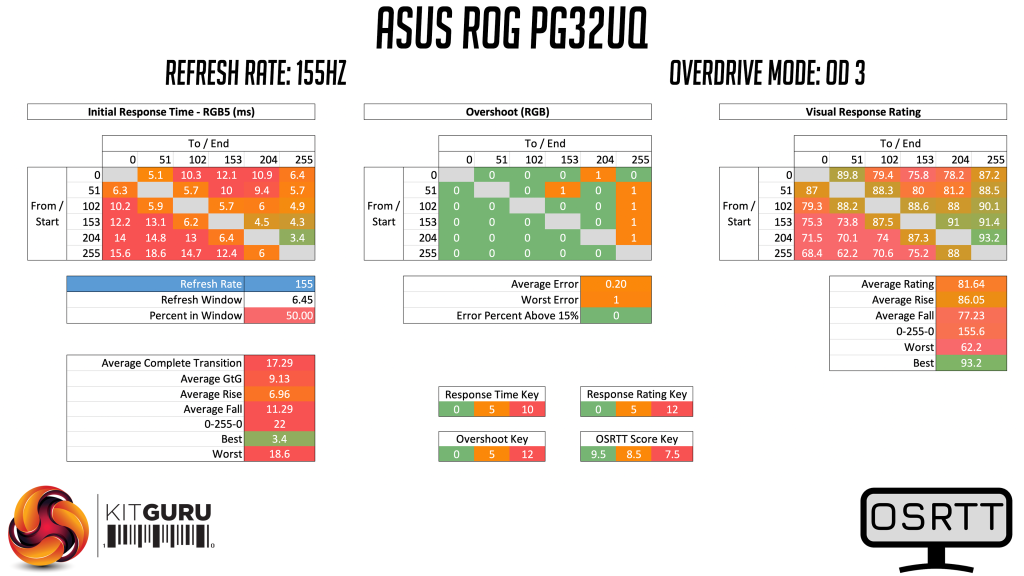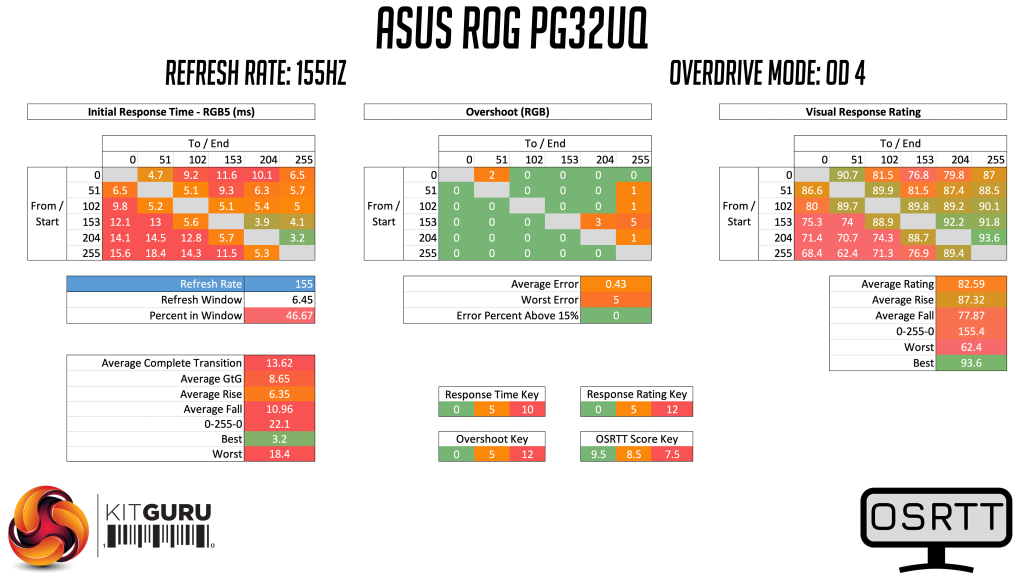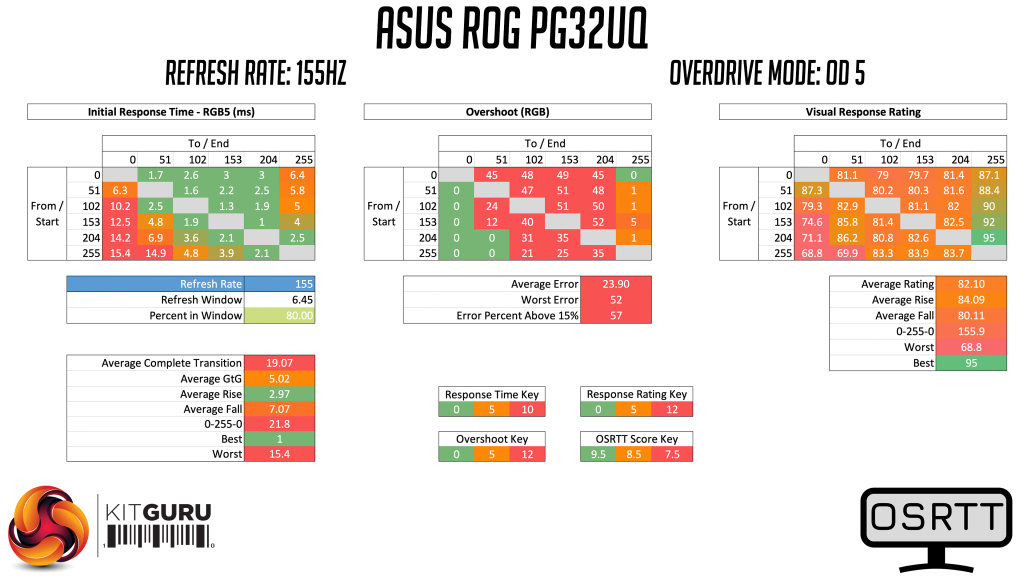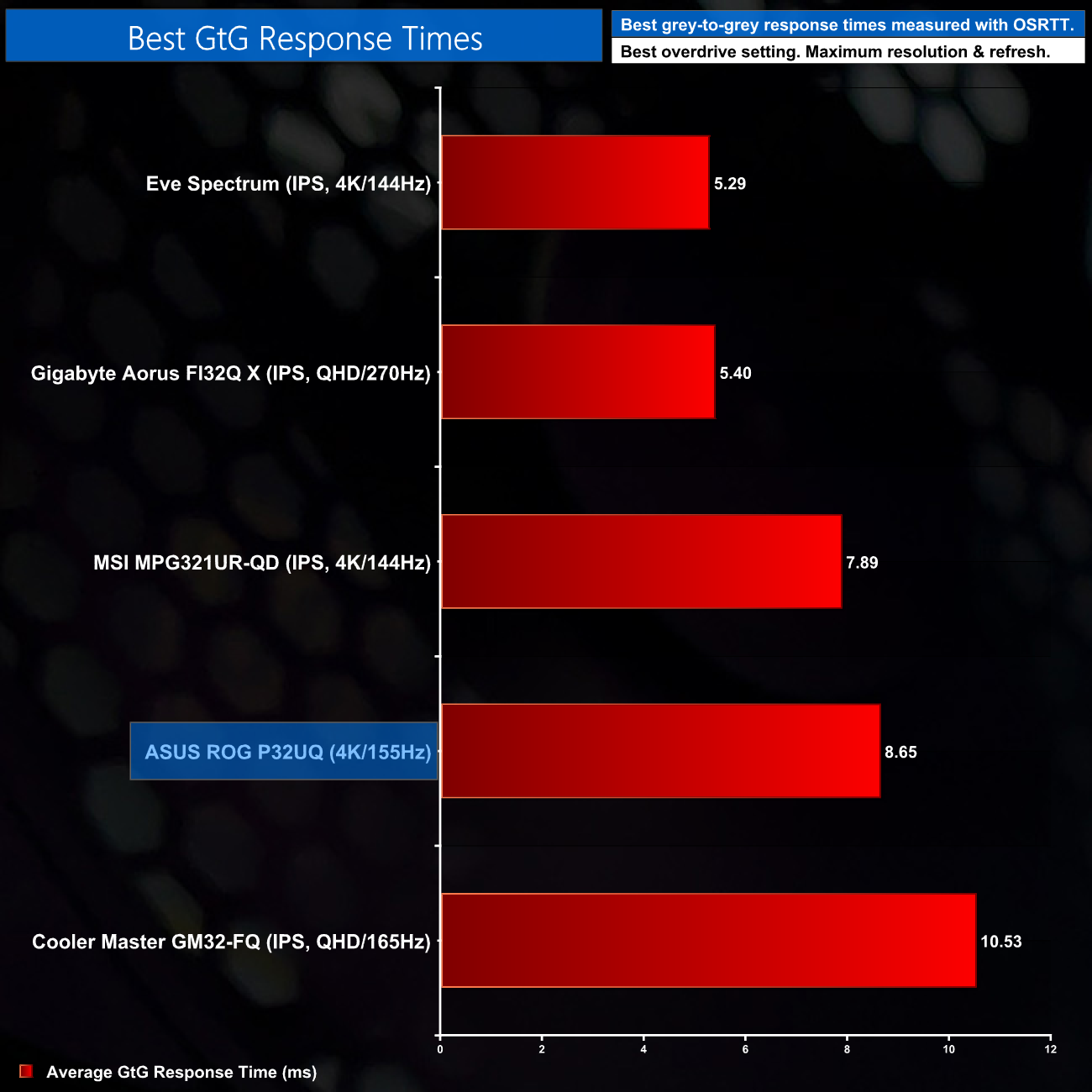Monitor response time testing is a new addition to our reviews, where we use the Open Source Response Time Tool (OSRTT), developed by TechTeamGB. This measures grey-to-grey response times and presents the results in a series of heatmaps, the style of which you may be familiar with from other reviews.
Initial Response Time is the time taken for the panel to transition from one colour to another, where lower values are better. We present the initial response time, so overshoot is not taken into account and is measured separately. We use a fixed RGB 5 tolerance for each transition.
Overshoot is the term given for when a monitor's transition exceeds or goes beyond its target value. So if a monitor was meant to transition from RGB 0 to RGB 55, but it hits RGB 60 before settling back down at RGB 55, that is overshoot. This is presented as RGB values in the heatmaps – i.e. how many RGB values past the intended target were measured.
Visual Response Rating is a metric designed to ‘score' a panel's visual performance, incorporating both response times and overdrive. Fast response times with little to no overshoot will score well, while slow response times or those with significant overshoot will score poorly.
We test the PG32UQ at 155Hz, using all five of the overdrive settings found within the OSD.
The first three overdrive modes are not worth using in my opinion. All offer no, or next to no, overshoot, but with pretty slow response times. They do get slightly faster when comparing OD1 to OD3, the latter which reports an average GtG response time of 9.13ms, but that's still a lacklustre result.
OD 4 is the best mode in my view, though again it is still quite slow, with an average GtG response time of 8.65ms. The panel seems to have most trouble with its fall times, with the slowest response times shown when transitioning from pure white (RGB 255) shades, as you can see in the bottom left corner of the heatmap. There is again very little overshoot however, making this the most usable mode for me.
The reason I don't recommend OD5 mode is the excessive overshoot that is introduced. Grey-to-grey response times are much faster across the board, but at the cost of some excessive inverse ghosting, which was very unpleasant to look at.
This does mean there's not really an ideal overdrive mode to use – OD 4 is still a bit slow, while OD 5 just has far too much overshoot. Like I say, OD 4 is the best of the lot, but I'd have liked to see a setting between OD 4 and 5, as I think we could see faster response times but without the excessive overshoot introduced by OD 5 mode.
Putting the results into context, the PG32UQ sits towards the bottom of our chart, though we have plenty more monitors to test before this becomes a comprehensive comparison. We can see that the PG32UQ isn't miles slower than the MSI MPG321UR-QD however, which is a similar 32in 4K/144Hz display, but the Eve Spectrum is a class apart in terms of the response times.
 KitGuru KitGuru.net – Tech News | Hardware News | Hardware Reviews | IOS | Mobile | Gaming | Graphics Cards
KitGuru KitGuru.net – Tech News | Hardware News | Hardware Reviews | IOS | Mobile | Gaming | Graphics Cards


